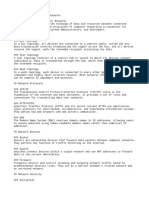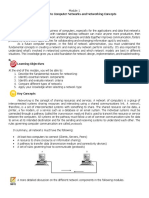0% found this document useful (0 votes)
33 views2 pagesNetwork Security Syllabus
The document outlines the curriculum for a Network Security course under the NEP Oriented BCA program, detailing course type, credits, evaluation scheme, and course outcomes. Key topics include networking fundamentals, network security principles, firewall basics, and network traffic analysis. The course aims to equip learners with essential skills in business communication, document writing, teamwork, and understanding network security measures.
Uploaded by
pratik.shende2612Copyright
© © All Rights Reserved
We take content rights seriously. If you suspect this is your content, claim it here.
Available Formats
Download as PDF, TXT or read online on Scribd
0% found this document useful (0 votes)
33 views2 pagesNetwork Security Syllabus
The document outlines the curriculum for a Network Security course under the NEP Oriented BCA program, detailing course type, credits, evaluation scheme, and course outcomes. Key topics include networking fundamentals, network security principles, firewall basics, and network traffic analysis. The course aims to equip learners with essential skills in business communication, document writing, teamwork, and understanding network security measures.
Uploaded by
pratik.shende2612Copyright
© © All Rights Reserved
We take content rights seriously. If you suspect this is your content, claim it here.
Available Formats
Download as PDF, TXT or read online on Scribd
/ 2
























































































